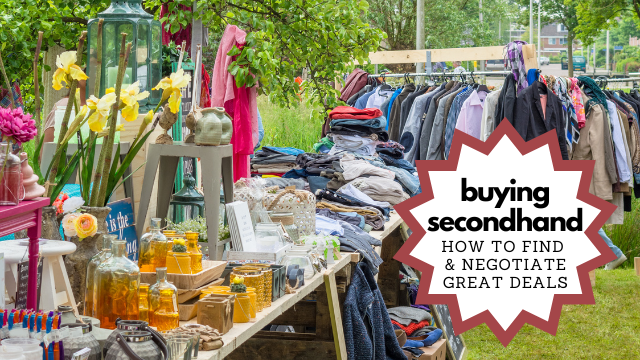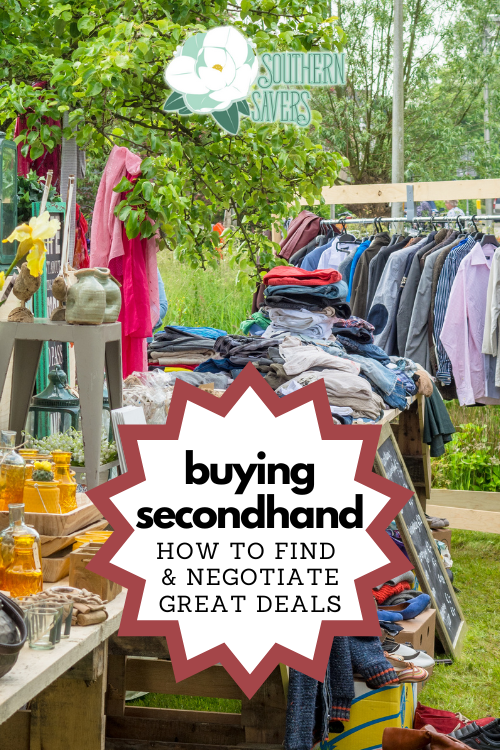This post may contain affiliate links. Read our disclosure here.

Buying secondhand can be very rewarding. You can often find high quality items in good condition for a fraction of their original price. It’s a great tool for sticking to a budget on household items (clothing, furniture, baby gear) that we don’t normally get coupons for.
Here’s a fun deal I snagged on Craigslist earlier this year: A 3′ x 6′ wood campaign dresser for just $15. The owner was moving cross-country and just needed it gone!
In order to find the good stuff, you also have to navigate through the junk, be willing to negotiate, and know what a deal is. Here are some tips to get the most for your money when buying secondhand.
Buying Secondhand: How to Find & Negotiate Great Deals
Know what you are looking for. It’s a good idea to make a list of items that you need, so that you can keep an eye out for those specific items without getting distracted by good deals on things you won’t really use. Write down approximate dimensions of furniture items you are hunting for, and keep a tally of each family member’s clothing size.
Research what a good price is. I’ve seen many secondhand stores and classified listings that thought just because something looked new, they could charge near-retail prices for it. I expect secondhand prices to be at least 50-75% off what you would pay if you purchased the item new. When it comes to furniture items, the condition, age, and construction of the piece also plays a big factor, so you might be willing to pay a little more for a solid wood antique.

Act quickly. If in a item pops up on Facebook marketplace, Craiglist, or in a classified ad that you really want, act quickly by calling or emailing and letting the person know you would like the item and can come by the same day to look at it. The really good deals will disappear fast, especially as resellers find out about the items.
Bring cash in small denominations. Prices in most secondhand situations are usually negotiable. If you find something you really want, it doesn’t hurt to ask for a lower price. Bring small bills so that you can make exact change. It feels uncomfortable for everyone if you negotiate and then pull out a large bill. (Many people also take digital payment like Venmo or Paypal!)

Don’t buy things you don’t need. One of the quickest ways to eat up your budget is on buying things you won’t use just because they are so cheap. We have a household rule that if we can’t think of a place for it, it doesn’t come home with us. The idea might cross your mind that you could always resell the item, but really think about whether you will have the time, energy, and space to deal with it.
Know where to look. Craigslist, local classifieds, Facebook Marketplace, consignment sales, garage sales, thrift stores, and the Habitat for Humanity Restore are all great places to find deals on secondhand items. Make a point to drop by the stores on a regular basis or spend one Saturday a month garage sale-ing.
If you’re trying to SELL secondhand, be sure to check out my tips on how to sell things online!
Do have any tips for buying secondhand? What was your favorite find?




